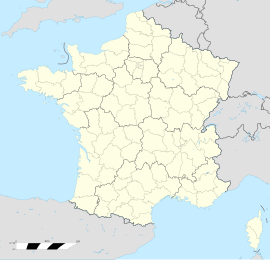Vaour
Vaour | |
|---|---|
 The former Commandry of Vaour | |
| Coordinates: 44°04′23″N 1°48′09″E / 44.0731°N 1.8025°E | |
| Country | France |
| Region | Occitania |
| Department | Tarn |
| Arrondissement | Albi |
| Canton | Carmaux-2 Vallée du Cérou |
| Government | |
| • Mayor (2021–2026) | Jérémie Steil[1] |
| Area 1 | 14.12 km2 (5.45 sq mi) |
| Population (2021)[2] | 328 |
| • Density | 23/km2 (60/sq mi) |
| Time zone | UTC+01:00 (CET) |
| • Summer (DST) | UTC+02:00 (CEST) |
| INSEE/Postal code | 81309 /81140 |
| Elevation | 240–507 m (787–1,663 ft) (avg. 432 m or 1,417 ft) |
| 1 French Land Register data, which excludes lakes, ponds, glaciers > 1 km2 (0.386 sq mi or 247 acres) and river estuaries. | |
Vaour (French pronunciation: [vauʁ]; Occitan: Vaur) is a commune and cantonal administrative centre located in the northwestern part of the Tarn department in southern France.
On the north the commune borders the Tarn and Garonne department, and the rising land consists of a gray limestone causse stretching almost to the Averyon river seven or eight kilometers away. Below the commune to the south the landscape consists of the forest of Grésigne - the largest oak forest in the midi - its hills scattered with grassy meadows, and the vineyards of Gaillac.
Vaour contains the ruins of a Templar Commanderie which overlooks the village of Vaour and has commanding views to the South West towards the Pyrenees. The commune also hosts a performing arts festival each summer known as the Été de Vaour which attracts visitors and performers from across France and further afield.[3] The village hosts a market for good local produce each Thursday in the village square.
See also
[edit]References
[edit]- ^ "Répertoire national des élus: les maires" (in French). data.gouv.fr, Plateforme ouverte des données publiques françaises. 13 September 2022.
- ^ "Populations légales 2021" (in French). The National Institute of Statistics and Economic Studies. 28 December 2023.
- ^ L'Été de Vaour



